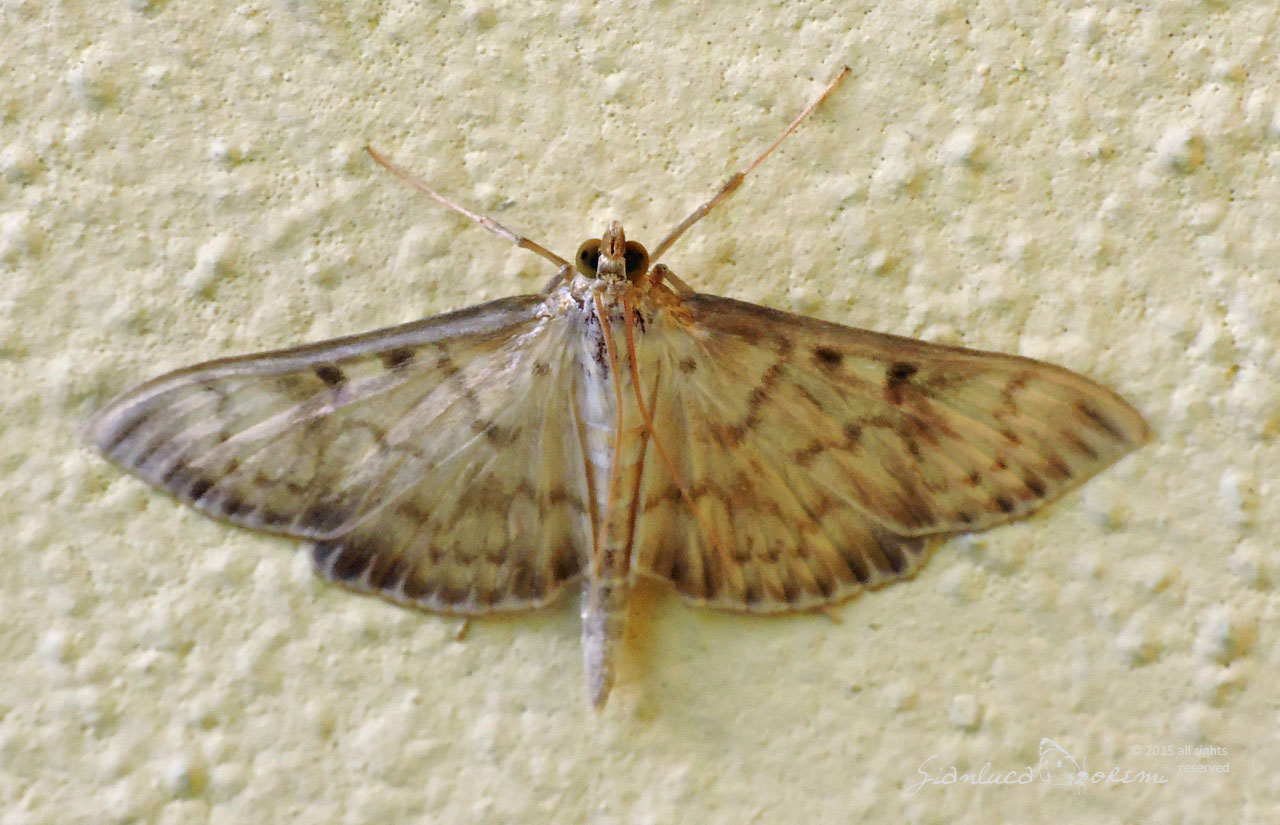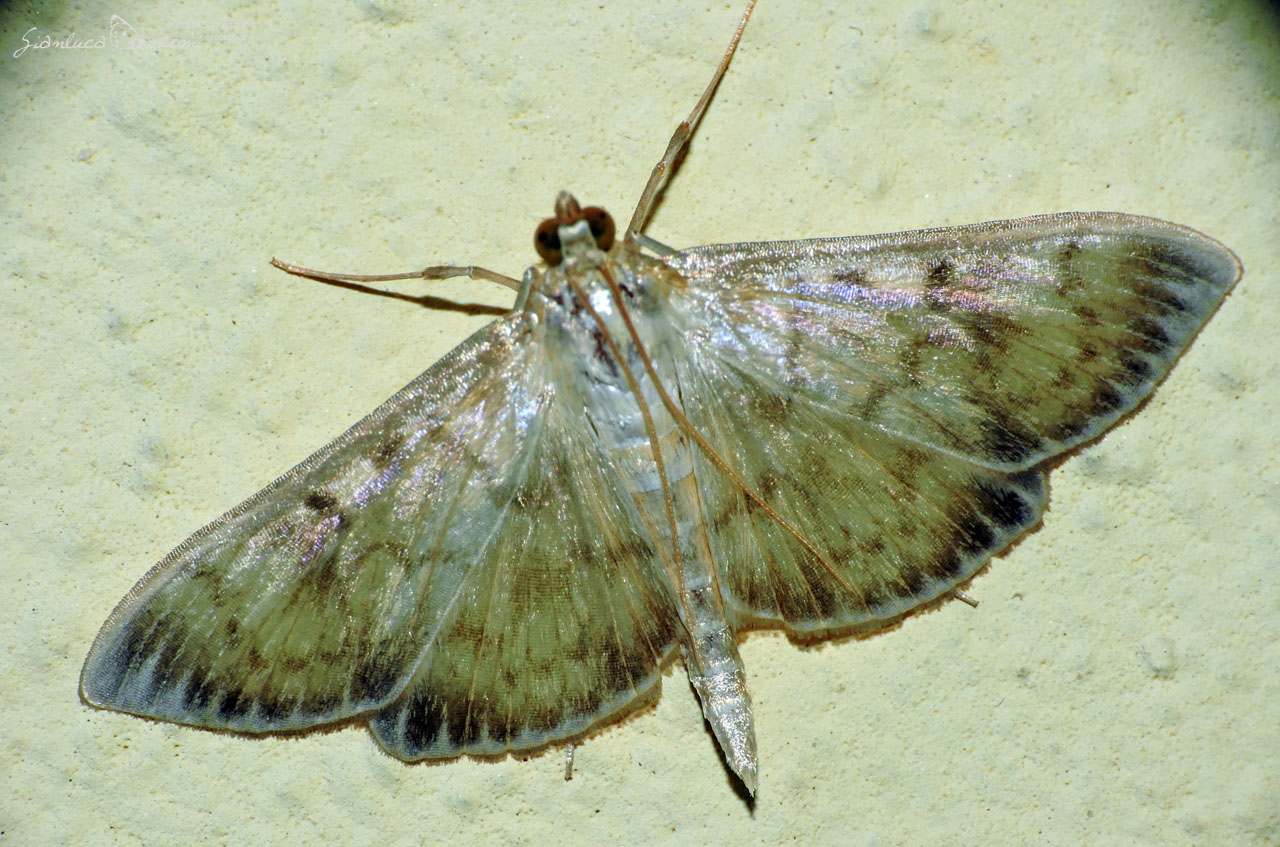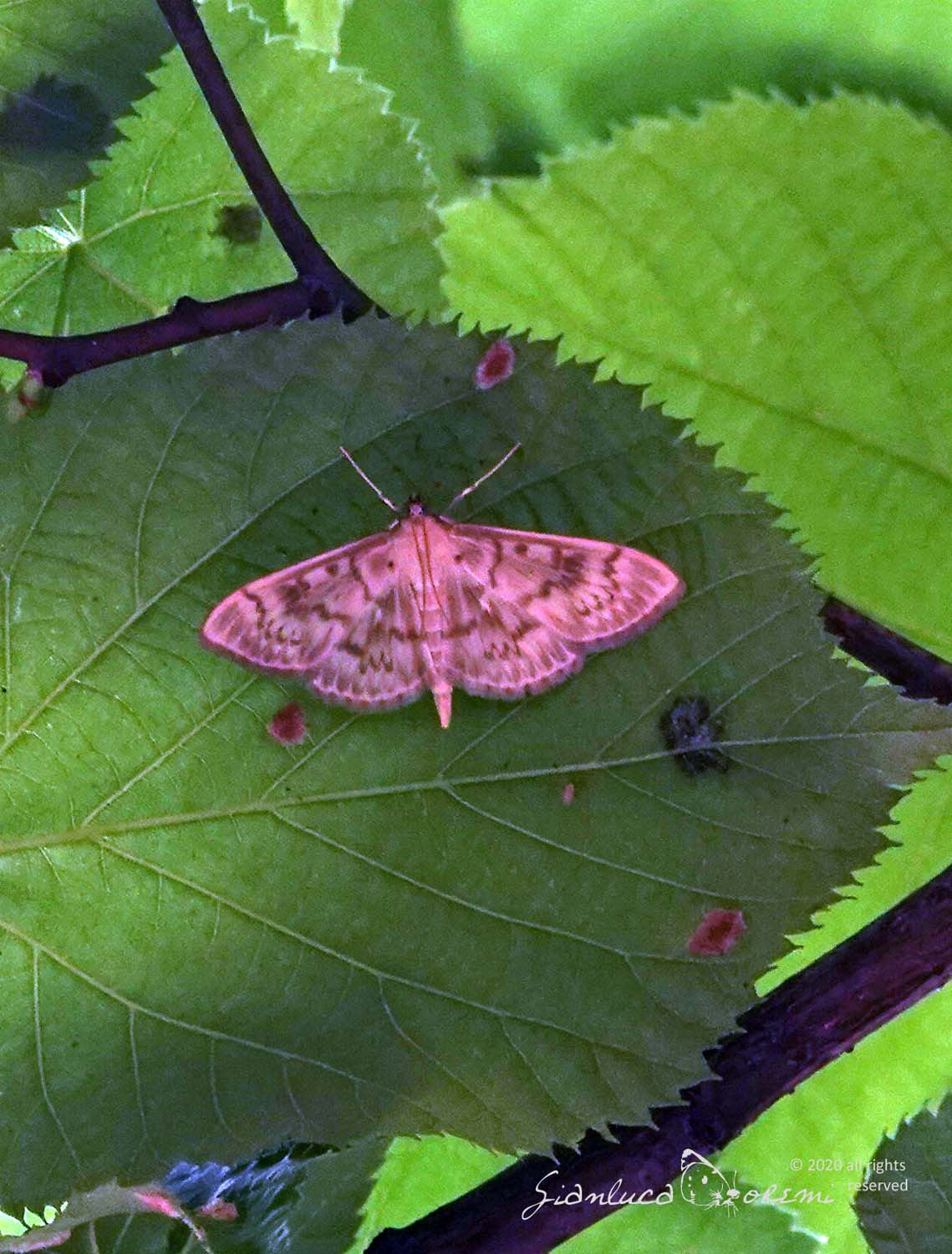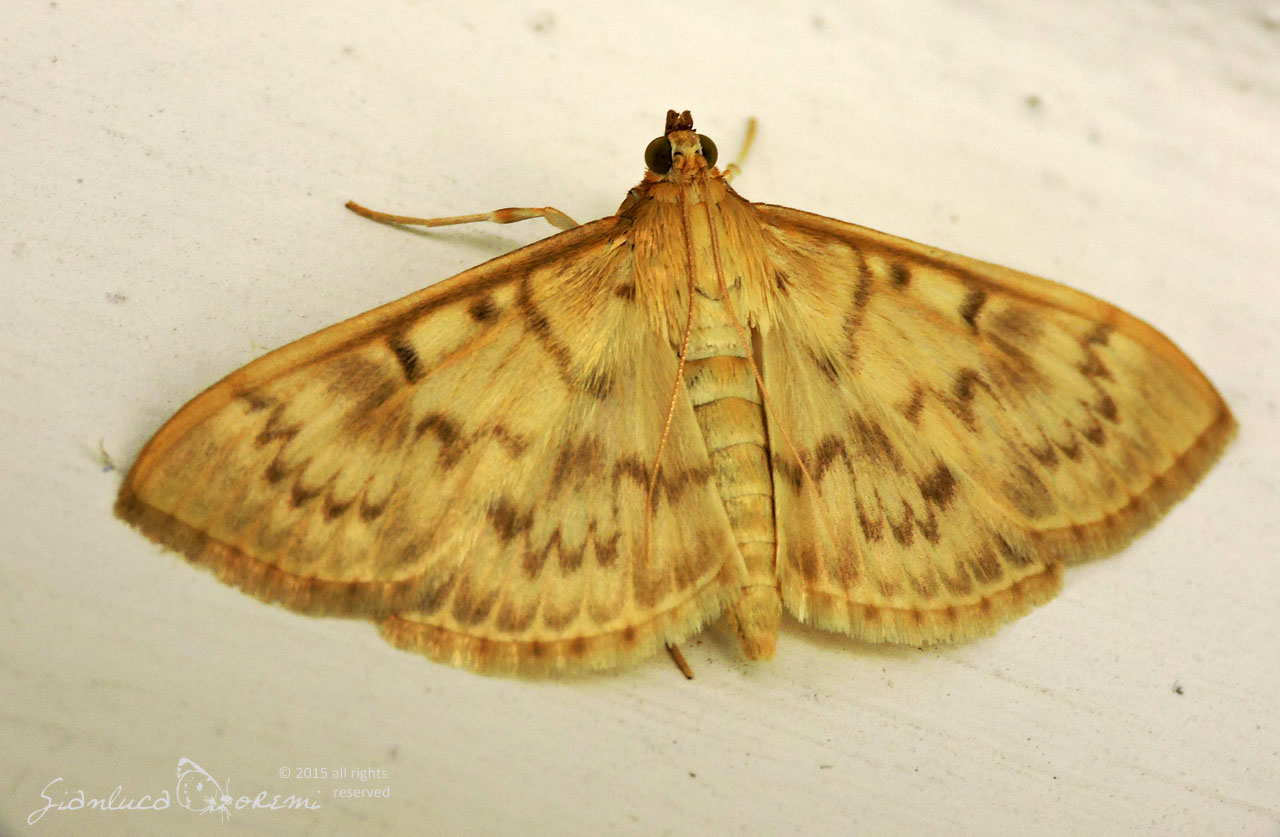Patania ruralis
(Scopoli, 1763)
-
 Subfamily: Spilomelinae
Subfamily: Spilomelinae -
 Wingspan: 28-40 mm
Wingspan: 28-40 mm -
 Flight period: May - Sep
Flight period: May - Sep -
 Spread: Common
Spread: Common -
 Host plants: Urticaceae
Host plants: Urticaceae
Information
The Patania ruralis known by the synonym Pleuroptya ruralis is a moth of the Crambidae family, subfamily Spilomelinae, with a wingspan of 28-40 mm.
In Europe it is present almost everywhere. In Italy it is also present in the islands. *
The color of the wings of the Patania ruralis is translucent light ocher, two brown lines are visible in the basal and discal region, the first straight and uniform,
the second serrated and broken, with an external brown shading in the median area, a series of lunulae, always brown, surrounded by ocher towards the outside,
they give the appearance of a third line, with a curved course, in the post discal region.
The apex is brown like the edge of the wing, interrupted by ocher-colored veins. A thin brown band is visible along the costa, interrupting in the post discal region.
The costa is ocher. The wing is fringed in ocher with brown shades.
The rear wing is very similar to the front one, slightly lighter, the layout of the lines is such that at rest the front and rear wings make up a single design.
Palps, head, abdomen and thorax are light ocher with darker shades.
When at rest the moth shows all four wings and in certain light conditions, pearly reflections are seen, as the common name suggests The Mother of Pearl,
a feature that makes them easily recognizable.
The habitats of Patania ruralis are diverse, rural gardens, uncultivated land and lean pastures often with the presence of nettle for daytime rest.
Adults fly from dusk onwards, and are often attracted to artificial light. Given the large size, they can be mistaken for belonging to the family of the Geometridae.
The larvae are visible from mid-August and until after hibernation in April they stay on the leaves of the host plant.
Mature caterpillars are dull green in color, with light spots. In the final stage, the head is yellowish.
The pupa is black brown with reddish brown shades **
As mentioned, the larvae feed on Urtica dioica (nettle), very rarely on other low plants such as those belonging to the families
Cannabaceae, Chenopodiaceae, Grossulariaceae, Polygonaceae and Rosaceae.
* Lepidoptera mundi https://lepidoptera.eu/ - Fauna Europea https://fauna-eu.org/
** Bestimmungshilfe für die in Europa nachgewiesenen Schmetterlingsarten - http://lepiforum.de/










 EN
EN ITA
ITA
Social and publications